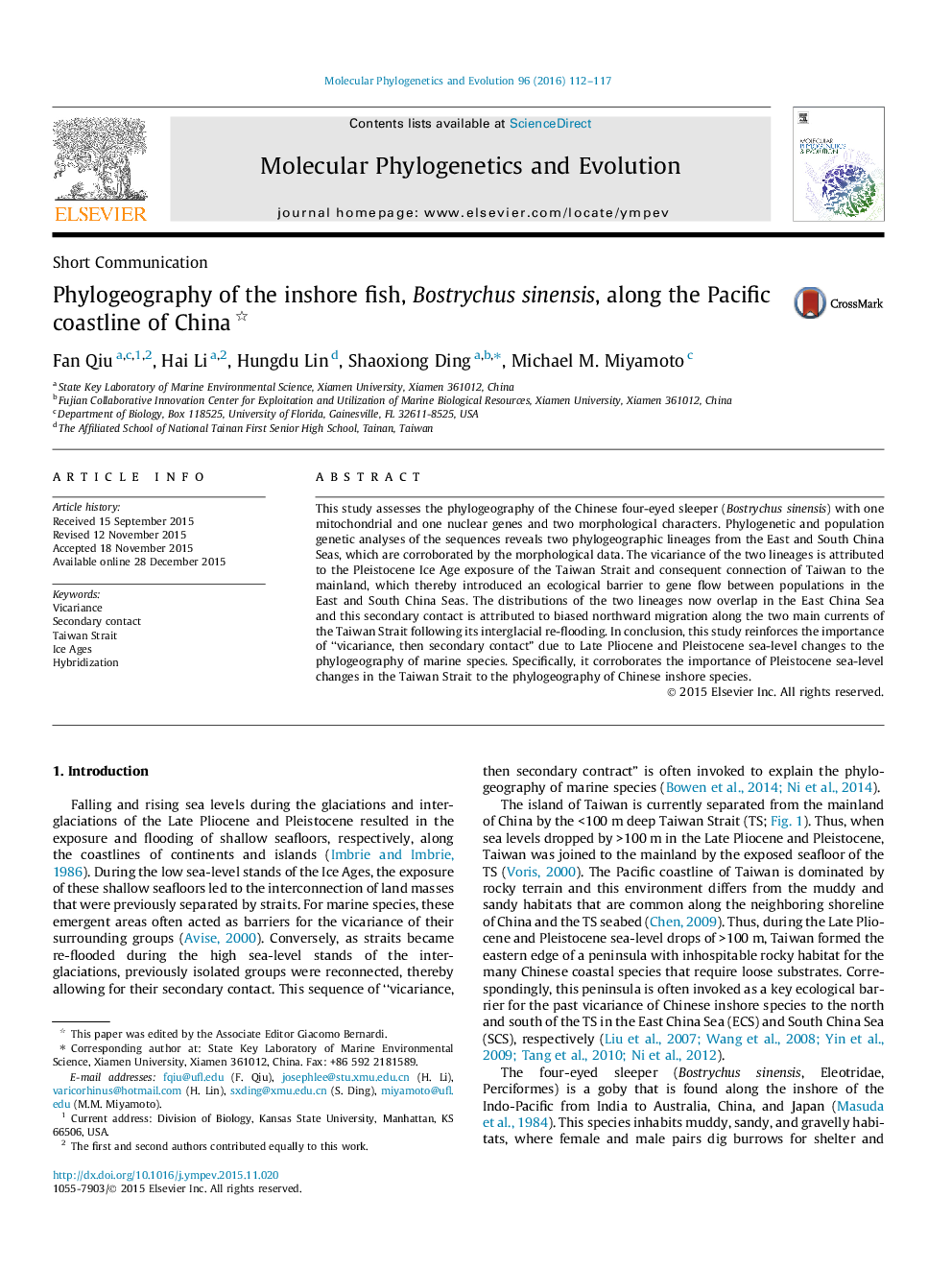| Article ID | Journal | Published Year | Pages | File Type |
|---|---|---|---|---|
| 2833754 | Molecular Phylogenetics and Evolution | 2016 | 6 Pages |
•The Chinese four-eyed sleeper consists of two phylogeographic lineages that originated in the East and South China Seas.•The vicariance of these two lineages is attributable to the mid-Pleistocene glacial exposure of the Taiwan Strait.•The distributions of the two lineages currently overlap as a region of secondary contact in the East China Sea.•This secondary contact is due to later inter-glacial re-flooding of and biased northward migration across the Taiwan Strait.
This study assesses the phylogeography of the Chinese four-eyed sleeper (Bostrychus sinensis) with one mitochondrial and one nuclear genes and two morphological characters. Phylogenetic and population genetic analyses of the sequences reveals two phylogeographic lineages from the East and South China Seas, which are corroborated by the morphological data. The vicariance of the two lineages is attributed to the Pleistocene Ice Age exposure of the Taiwan Strait and consequent connection of Taiwan to the mainland, which thereby introduced an ecological barrier to gene flow between populations in the East and South China Seas. The distributions of the two lineages now overlap in the East China Sea and this secondary contact is attributed to biased northward migration along the two main currents of the Taiwan Strait following its interglacial re-flooding. In conclusion, this study reinforces the importance of “vicariance, then secondary contact” due to Late Pliocene and Pleistocene sea-level changes to the phylogeography of marine species. Specifically, it corroborates the importance of Pleistocene sea-level changes in the Taiwan Strait to the phylogeography of Chinese inshore species.
Graphical abstractFigure optionsDownload full-size imageDownload as PowerPoint slide
